In the realm of backyard poultry care, the design and outfitting of a chicken coop stand as crucial elements that directly influence the well-being, safety, and productivity of the chickens it houses. A properly equipped chicken coop does more than just offer shelter; it provides a sanctuary where chickens can perform their natural behaviors, rest, lay eggs, and be protected from predators and harsh weather conditions. What Should Be Inside a Chicken Coop? This comprehensive guide aims to shed light on the essential components and thoughtful considerations necessary for constructing or enhancing a chicken coop. It covers everything from the fundamental necessities like nesting boxes and roosting bars, to considerations for optimal space, ventilation, and protection against the elements and predators. Suitable for both novice and experienced chicken keepers, this guide ensures your feathered friends enjoy a comfortable, secure, and engaging environment that meets all their needs.
What Is Chicken Coop?
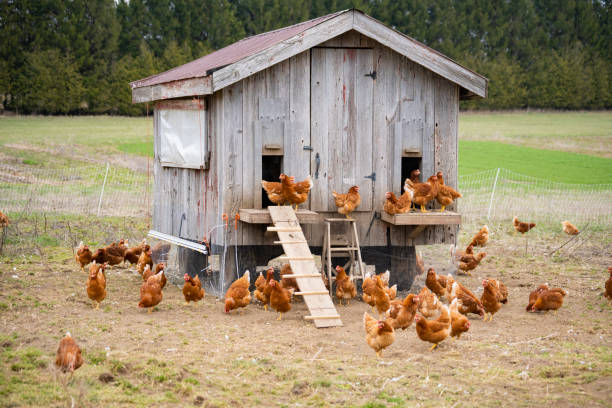
What Is Chicken Coop?
A chicken coop is a structure that serves as a house for chickens, providing them with shelter, safety, and comfort. It typically contains nesting boxes and roosts, offering a secure place for chickens to roost at night and lay eggs. Additionally, a chicken coop can have features like ventilation, lighting, raised floors, and insulation to ensure the well-being of the chickens. It is an essential component for keeping chickens safe, healthy, and productive.
Core Components of a Chicken Coop
Roosting Bars
Roosting bars are a fundamental feature of any chicken coop. Chickens have a natural instinct to perch on elevated surfaces when they sleep. Roosting bars allow them to satisfy this innate behavior. Usually made of wood, the optimal roosting bars are 2-4 inches wide to provide a comfortable grasping surface for the chickens’ toes. Round edges help prevent foot injuries. Place roosting bars 2-3 feet off the ground and space multiple bars 18-24 inches apart horizontally to give each bird enough personal space. The bars should be sized appropriately to accommodate the full number of chickens in the flock.
Nesting Boxes
Nesting boxes offer hens a dedicated space to lay their eggs. Provide at least one 12″ x 12″ next box for every three to four hens in your flock. Covering the floor of the nest boxes with 4-6 inches of litter material like straw or wood shavings gives the hens something to arrange into a nest. Nest boxes should be softly lit and placed away from busy areas to minimize disturbances. Installing the boxes at least 2 feet off the ground allows the hens to use their natural instincts to fly up and settle into their preferred box. Make sure the nests are easily accessible for convenient egg collection.
Flooring and Bedding
The floor of the chicken coop should be covered with 2-5 inches of absorbent litter material. Wood shavings and straw are common options, or you can use sand or shredded paper. The bedding performs several important functions – it absorbs moisture from chicken droppings, provides insulation and cushioning, and encourages natural scratching and dust bathing behaviors. Make sure to replace wet or soiled bedding promptly to prevent unhealthy ammonia buildup. An ideal coop floor is constructed from hardware cloth or wire mesh over a frame. This allows droppings to fall through for easy cleaning while keeping chickens elevated away from their waste.
Ventilation
Proper ventilation is critical for maintaining air quality within the chicken coop. When chickens breathe, they produce moisture and ammonia that can build up to toxic levels if not adequately ventilated. Provide good airflow by installing windows, eave openings, or roof ventilators. Place ventilation openings near the top of the coop to allow rising warm air to escape. Thermostatically controlled exhaust fans can be useful for managing temperatures, particularly in hot climates. In cold months, adjustable vents allow ventilation control while preventing drafts.
Space Requirements
It is important to provide adequate living space for each chicken’s comfort and well-being. As a general rule, allow 2-4 square feet per bird inside the coop. Additional outdoor run space should measure at least 10 square feet per chicken. Overcrowding causes stress, territorial disputes, contaminated litter, and increased risk of illness. Be sure to size your coop appropriately for the number of chickens in your flock.
Electrical Access
Having electrical power inside the chicken coop enables the use of lighting, fans, heating elements, and other electrical devices for optimized management. Install outlets at least 2 feet off the ground to prevent issues with moisture and scratching chickens. All wiring must be safely enclosed and protected. Ground fault circuit interrupter (GFCI) outlets are recommended for protection against electrical hazards and potential fires.
Lighting
Proper lighting stimulates egg production and maintains the chickens’ normal rhythms. Provide 14-16 hours of light per day using LED bulbs. Dim lighting in the evening signals to the chickens that it is time to rest. Task lighting over feeders and in nest box areas lets the chickens easily find these necessities. Automatic timers or photoperiod controllers allow customization of the light schedule to maximize eggs.
Environmental Enhancements
Beyond just the basic necessities, additional enrichment elements make the coop environment more stimulating and comfortable for the flock.
Entertainment and Engagement
Chickens are active, intelligent animals that benefit from entertainment and activities. Installing perches, branches, logs, and chicken swings encourages natural perching, exploration, and exercise behaviors. Scatter treats in leftover leaf litter or hay to inspire natural foraging activities. Adding shiny CDs or metallic cords promotes pecking and inspection. Rotate toys to keep the chickens engaged with novelty.
Predator Protection Measures
Defending against predators like foxes, coyotes, raccoons, and opossums is essential. Hardwire the coop with 1/2 inch mesh hardware cloth. Bury fencing 12 inches into the ground or install an apron to prevent digging underneath. Lock doors securely at night. Removable roosts can allow complete interior cleaning. Eliminate gaps where vermin could enter.
Insulation and Climate Control
Insulation helps moderate interior temperatures year-round for chicken health and productivity. Seal any drafty areas and cracks. For added warmth in winter, install radiant heat panels, thermal-reflective surfaces, or insulated curtain walls. In summer, ventilation is vital. Fans, misters, and air conditioners can also help counter hot weather. Thermostats and controllers maintain optimal temperature ranges automatically.
Operational and Health Considerations
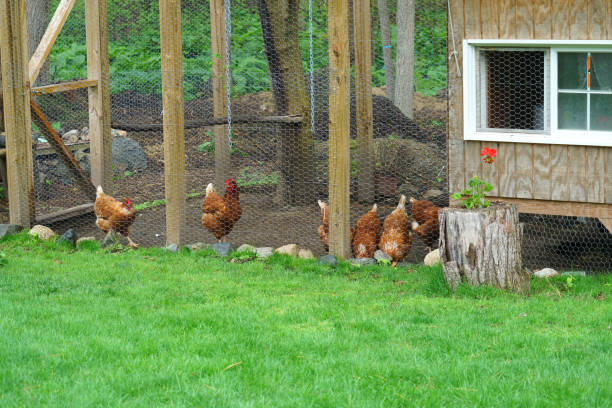
Operational and Health Considerations
Incorporating design elements to support convenient functionality and cleanliness is key for successful flock management.
Water and Feed Stations
Chickens need constant access to clean water and nutritious feed. Install gravity or nipple drinkers with catch trays and feeders designed to minimize waste. Allow at least 1.5 linear inches of feeder space and 1-2 drinkers per ten chickens. Place stations at chick height to start, then raise as they grow. Separating stations reduces competition. Routine cleaning prevents mold and contamination.
Hygiene Practices
Maintaining excellent sanitation practices in the coop is crucial for avoiding disease. Remove soiled litter promptly, and disinfect feeders and drinkers regularly. Letting the coop rest empty between flocks allows thorough cleaning and sun exposure to remove germs. Limit chickens’ exposure to wild birds and rodents that could carry pathogens. Provide dedicated boot brushes and handwashing stations for anyone entering the coop.
Seasonal Adjustments
Modifications to the coop are often needed between summer and winter for the chickens’ comfort. In warm months, maximizing ventilation prevents overheating. Misting systems can supplement evaporative cooling. Provide shade via trees, shade cloths, or indoor cooling perches. Come winter, block drafts and switch to deep bedding to retain warmth. Heaters and insulation maintain safe temperatures. Adjust lighting duration based on the season as well.
Accessibility for Maintenance
The coop must allow convenient access for care and maintenance. Doors sized for equipment and feed allow easy cleaning. Perches, nets, and fixtures should be reachable for repair work. External access doors to the nest box area facilitate egg gathering without disturbing the flock. Sufficient walkways inside accommodate movement and inspection without compacting litter. Locks on doors, screens, and electrics enable safe and complete maintenance capability.
Additional Considerations
Preparing for challenges and integrating new chickens smoothly are additional vital steps in coop management.
Emergency Preparedness
Be ready to manage power outages, extreme weather, predators, or injuries. Install emergency lighting, backup power sources, and remote monitoring systems. Have on hand a first aid kit, generator, fire extinguisher, and other emergency equipment. Know your climate risks and have a safety plan in place. Securing the coop against threats will give you confidence and peace of mind no matter what occurs.
Integrating New Chickens
When adding new chickens to a flock, take measures to ease the transition. House new birds in a separate introductory coop area for a quarantine period first. Then allow supervised mingling during the day over a week or two. Observe closely for any signs of aggression. Provide abundant resources to minimize competition. Having multiple water, feed, and nesting areas allows the new and existing chickens to keep a comfortable distance until bonded.
Legal and Zoning Issues
Local regulations may restrict placement, size, or design of chicken coops. Research the laws in your municipality regarding owning backyard poultry. Zoning laws, permits, setback rules, and health codes should all be reviewed. Being aware of the legal landscape is essential for avoiding headaches down the road. Some areas even provide tax incentives for coops meeting ecologically friendly standards.
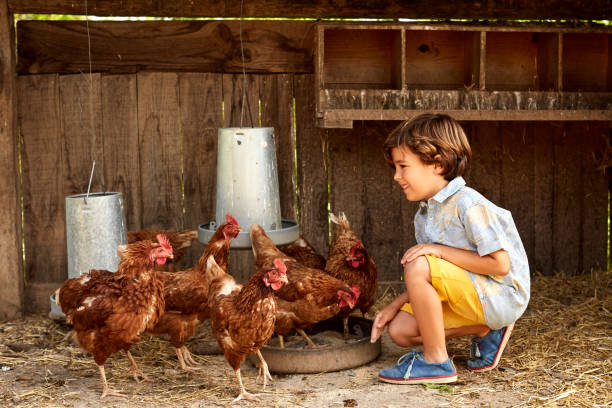
Additional Considerations
Conclusion: What Should Be Inside a Chicken Coop
Equipping your chicken coop with all the essential elements outlined above results in a productive and enriching environment. Your flock will thrive when you focus on their health, safety, comfort, and happiness as core priorities. Choosing the right coop features and diligently maintaining the habitat makes for vigorous, resilient, and rewarding chickens that supply a bounty of nourishment. A well-designed coop balanced with your chickens’ needs provides the ideal foundation. With a thoughtfully furnished coop and proper care, your backyard chickens will live their best lives while benefiting your family too.


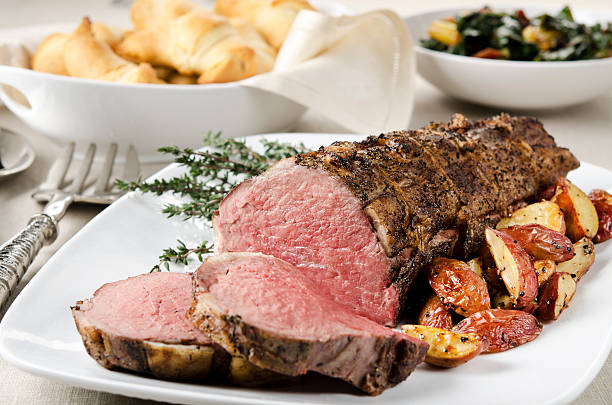









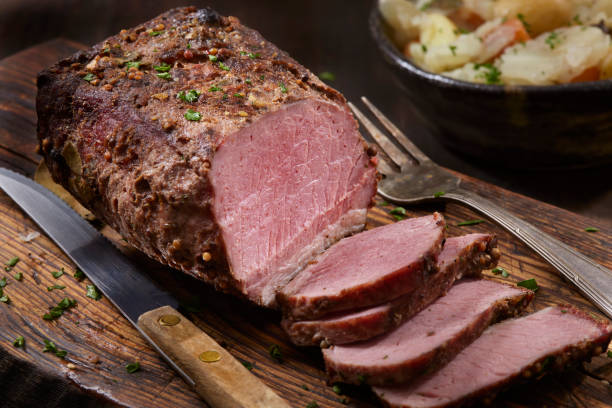
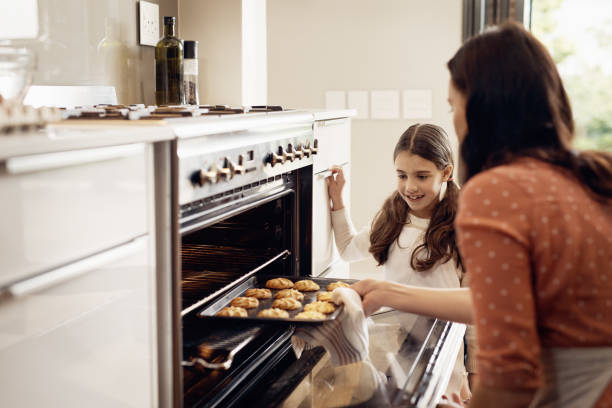












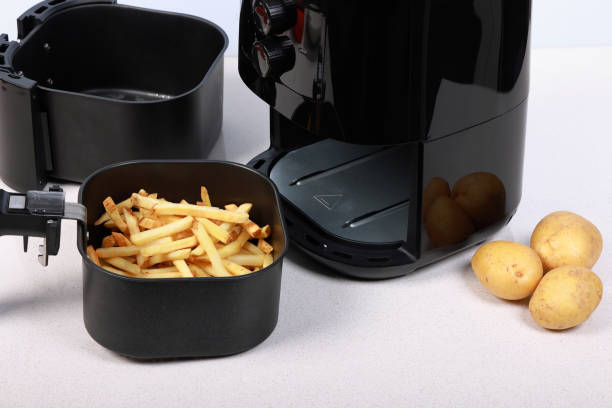

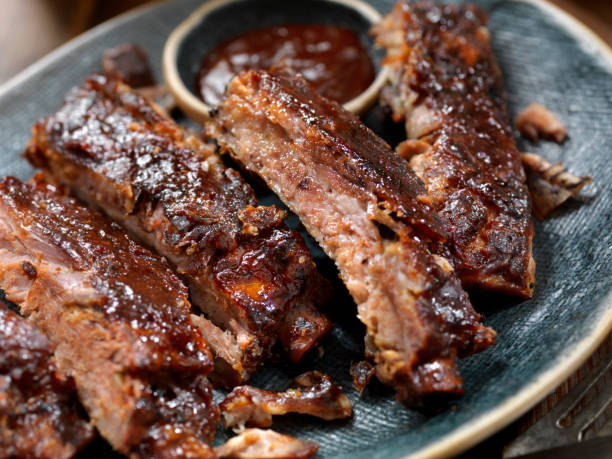
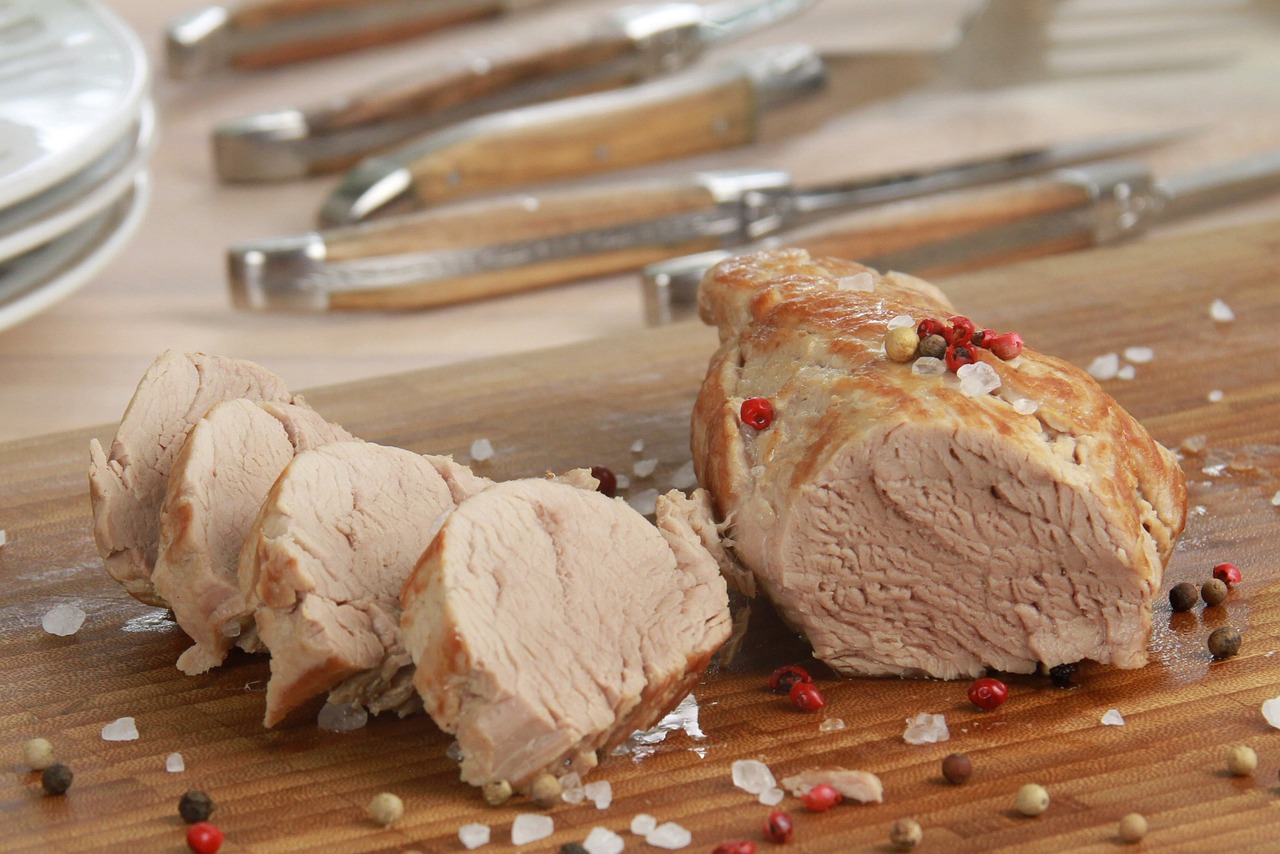
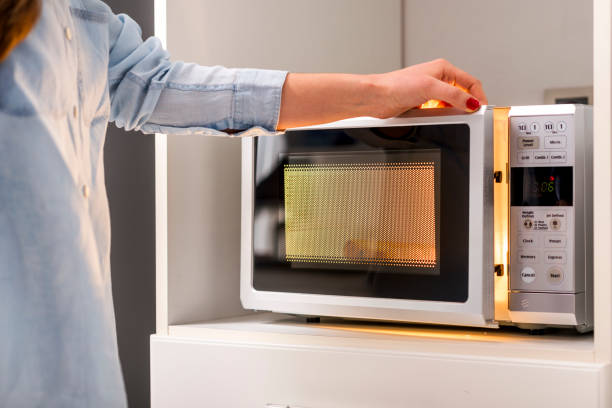

![America’s Best Wings Menu With Prices | Guides [Update 2023] America’s Best Wings Menu With Prices | Guides [Update 2023]](https://thesuntrapp.com/wp-content/uploads/2023/11/Screenshot-2023-11-16-020808.png)



